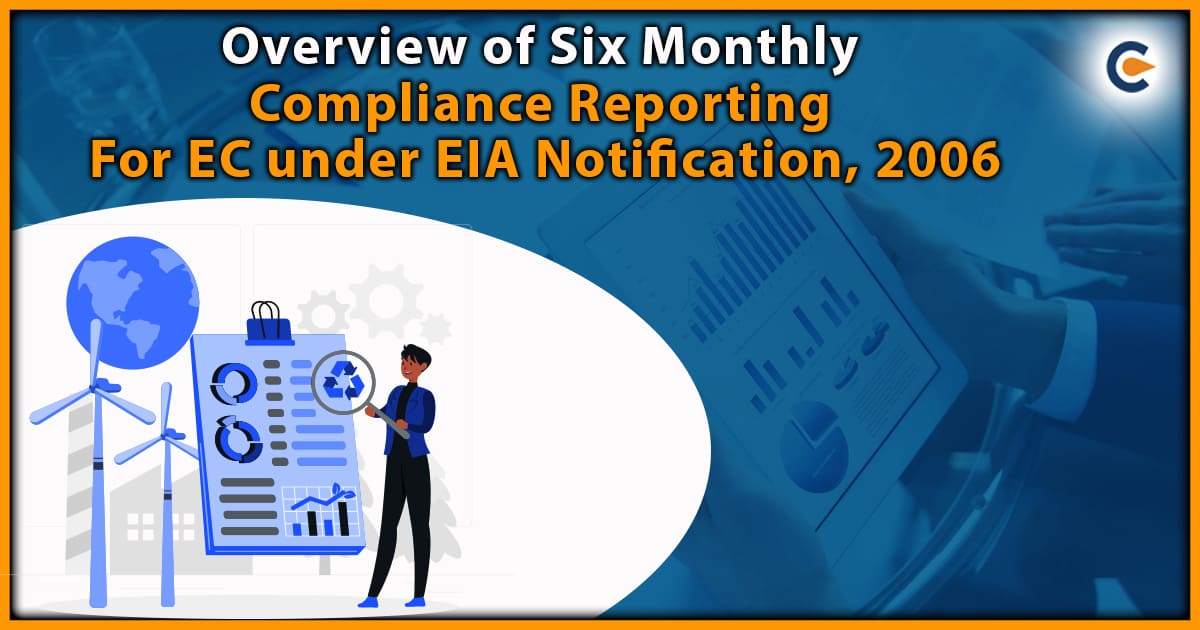The Environmental impact assessment report includes a detailed description of the proposed project and an analysis of potential environmental impacts, including impacts on air quality, water quality, land use, noise pollution, and biodiversity. The report also identifies mitigation measures that can be taken to reduce or prevent adverse environmental impacts. Regulatory agencies typically require an EIA report before a project can be approved. It may be required at various project stages, such as during the planning, design, and construction phases. A well-written EIA report should comprehensively analyse the project’s potential impacts, including direct and indirect impacts, short-term and long-term impacts, and cumulative impacts. The report should also include clear and effective mitigation measures to avoid, minimise, or compensate for potential negative impacts. The information is usually prepared by environmental consultants or experts who are trained in environmental science and have the expertise to identify the potential effects and propose mitigation measures.
How to Write an Environmental Impact Assessment Report?
An Environmental Impact Assessment (EIA) report is vital because it evaluates the potential environmental impacts of a proposed project or development. It is a comprehensive document that assesses a project’s potential environmental, social, and economic impacts. It provides information to decision-makers, stakeholders, and the public to help them make informed decisions about the project.
Here are some critical Steps in developing an Environmental impact assessment report:
Step 1: Identify Potential Environmental Impacts: The EIA report identifies and evaluates the potential environmental impacts of a proposed project, including its impact on air quality, water quality, soil quality, biodiversity, and human health. This helps decision-makers to understand the potential risks associated with the project and to develop mitigation measures to reduce those risks.
Step 2: Decision-Making: The EIA report provides decision-makers with important information about a proposed project’s potential environmental impacts and economic and social benefits. This information helps decision-makers weigh the project’s costs and benefits and make informed decisions.
Step 3: Include Views of the Public through Public Participation: The EIA report is often subject to public review and comment. This process allows members of the public to provide feedback on the proposed project and to raise concerns about potential environmental impacts. Public participation helps to ensure that decision-makers consider the concerns and opinions of the public.
Step 4: Facilitate Project Design and Planning: The EIA report helps to identify potential environmental impacts early in the project planning process. This allows project designers to consider environmental factors in their project design and to develop strategies to minimise the project’s impact on the environment.
Step 5: Implement Monitoring and Evaluation Measures: The EIA report provides a baseline of environmental conditions before the project begins and outlines the project’s potential impacts. This baseline data can be used to monitor the project’s impact on the environment over time and to evaluate the effectiveness of mitigation measures.
Regulations Governing Environmental Impact Assessment Report
In India, the Environmental Impact Assessment (EIA) process is governed by the Ministry of Environment, Forests, and Climate Change (MoEF&CC) under the Environment (Protection) Act, 1986. Several guidelines and policies govern the EIA process in India, including the National Biodiversity Act, of 2002, the National Forest Policy, of 1988, and National Action Plan on Climate Change of 2008.
The Environmental impact assessment report is regulated by a set of legal provisions, including:
- Environmental Impact Assessment Notification, 2006: This notification provides the framework for the EIA process in India. It outlines the types of projects that require an EIA, the process for conducting an EIA, and the format for submitting an EIA report.
- Environmental Clearance (EC) Process: The EC process is mandatory for projects requiring an EIA. It involves the submission of an EIA report to the MoEF&CC[1] or the State Environmental Impact Assessment Authority (SEIAA) for clearance.
- Public Consultation Process: The EIA Notification, 2006, requires that public consultation be carried out for specific categories of projects. This process involves the public review of the EIA report and the opportunity for public comments and feedback.
- Expert Appraisal Committee (EAC): The EAC is a body appointed by the MoEFCC or SEIAA to review and evaluate EIA reports. The EAC provides recommendations on whether to grant environmental clearance to a project based on the findings of the EIA report.
- Monitoring and Compliance: The EIA Notification, 2006 also requires that project proponents submit regular reports on the project’s compliance with the environmental clearance conditions.
Conclusion
An Environmental Impact Assessment report is essential for assessing and managing a project’s potential environmental and social impacts. The EIA process helps ensure that projects are designed and implemented to minimise negative impacts and maximise benefits. The regulations governing the EIA process vary by jurisdiction. Still, in general, the process is governed by legal provisions, guidelines, and policies that are designed to ensure that the process is transparent, participatory, and scientifically rigorous. The EIA process typically involves public consultation, expert review, and monitoring and compliance to ensure that the project is implemented in an environmentally and socially responsible way. The EIA process is critical in ensuring sustainable development and protecting the environment and human health. It is recommended that a person looking for Environmental Impact Assessment report should seek expert advice or consultation to get a hassle-free experience in the extensive process.
Also Read:
Environmental Clearance Process In India: A Complete Outlook











